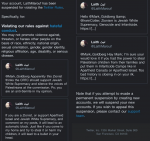A right of passage
Two months ago, I wrote “Increasingly Stringent Regulatory Measures”, describing how the CRTC was indirectly exercising authority over the owners of an apartment building in Saint John, New Brunswick, in order to ensure residents would have a choice of communications service providers. Although the CRTC has regulations that impact decisions made by building owners, Such firms are not really directly regulated by the Commission. In that particular case, the CRTC threatened to tighten the screws on other communications companies who are providing service within the particular building.
- Within 15 days following the date of this decision, Bell Canada and any other LEC or carrier ISP already in Telegraph Square will not be permitted to provide services to any new resident of Telegraph Square and will not be permitted to provide services to a current resident that is not an existing customer of the applicable service provider.
- Within 30 days following the date of this decision, any LEC or carrier ISP present in Telegraph Square will not be permitted to modify or upgrade the services being provided to a current resident.
- Within 45 days following the date of this decision, the Commission will explore all regulatory options available to it, including issuing an order under section 42 of the Act and issuing a decision which could result in all LECs and carrier ISPs present in Telegraph Square not being permitted to provide any services to the residents.
A new case has arisen in downtown Toronto. In this particular instance, Rogers has provided services to some residents of the building at 70 Yorkville since 1984, but has not been able to gain access to the building to service customers for the past 18 months, despite repeated requests, because the building manager says there is no access agreement in place. Rogers says that it has tried to negotiate an agreement but the property manager refuses to answer.
In the meantime, Rogers says that its inability to access its equipment means service is continuing to degrade for its 10 customers in that building as well as for commercial and residential customers in adjacent buildings.
The CRTC has sent a letter to 36 different telecommunications service providers to try to determine if any of them are providing services to tenants in the building.
My brother once told me that in his first litigation class in law school, the professor said that when people come into the office and say “it isn’t the money, its the principle of the thing”, a good lawyer will recognize that it really is about the money.
The CRTC’s rules require building owners to provide access to communications service providers on reasonable terms and conditions, in order to be able to install, maintain and repair their equipment and services.
Will the CRTC apply similar indirect tools such as the increasingly stringent measures used in February? Do these 2 recent cases indicate an emerging trend among property owners and managers?

